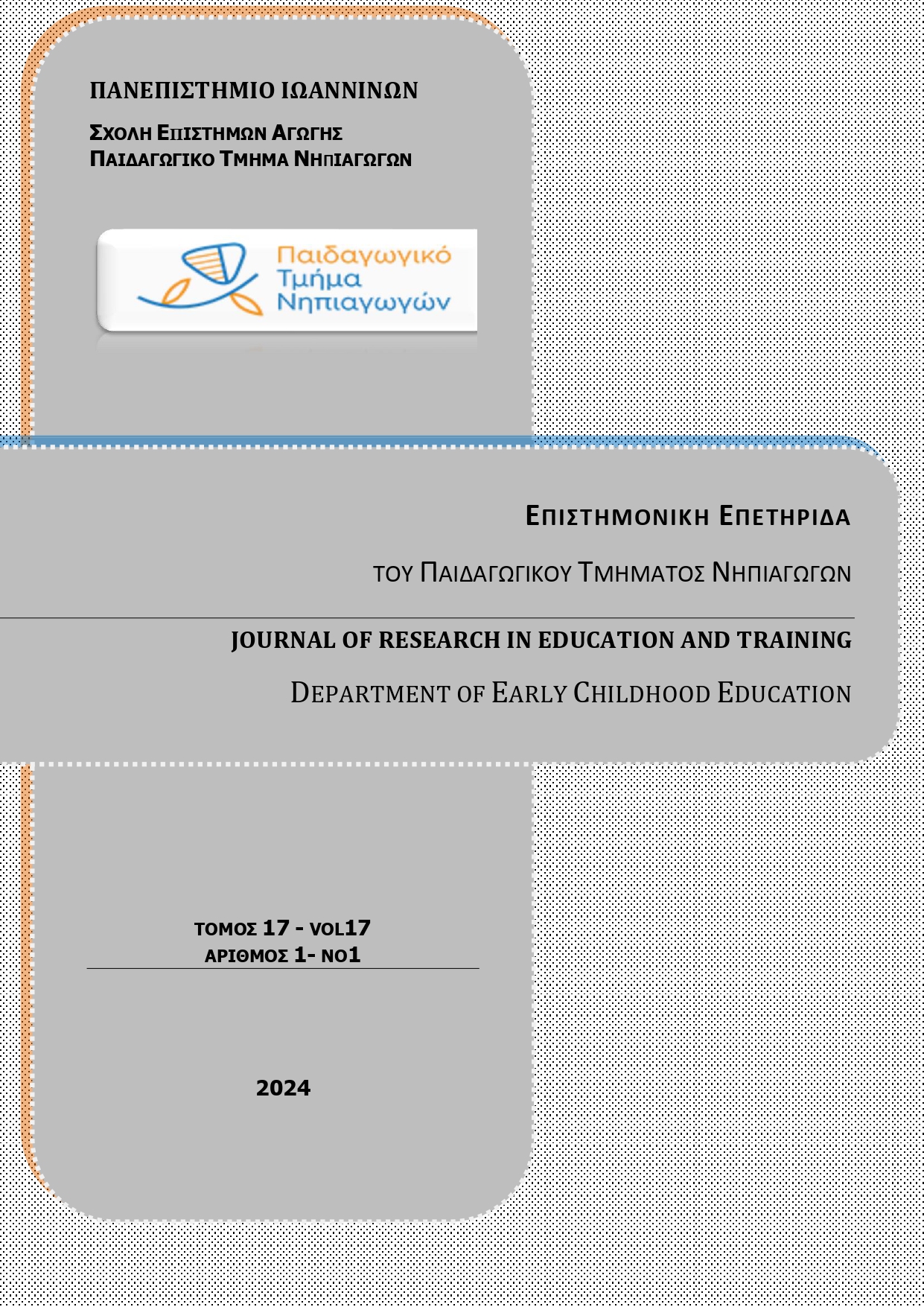Μαθητική Διαρροή, Κοινωνικός Αποκλεισμός και Κίνητρα Επανεκπαίδευσης: Μελέτη σε Σχολεία Δεύτερης Ευκαιρίας

Περίληψη
Στόχος της παρούσας έρευνας είναι να μελετηθούν οι κύριοι παράγοντες που οδηγούν στη Μαθητική Διαρροή, οι συνέπειες αυτής και τα κίνητρα και οι προσδοκίες που ωθούν τους διαρρέοντες μαθητές στην εκπαίδευση. Τα φαινόμενα που ερευνώνται είναι η Μαθητική Διαρροή (ΜΔ), ο Κοινωνικός Αποκλεισμός (ΚΑ) και τα Κίνητρα Επανεκπαίδευσης (ΚΕ), καθώς και η σχέση μεταξύ των επιμέρους φαινομένων (ΜΔ, ΚΑ και ΚΕ). Αναλυτικότερα, μέσα από μία πανελλήνια μελέτη που πραγματοποιήθηκε σε εκπαιδευόμενους/ες των Σχολείων Δεύτερης Ευκαιρίας (ΣΔΕ), αναζητούνται τα αίτια που ωθούν τους εκπαιδευόμενους στη ΜΔ, οι συνέπειες της ΜΔ και κατά πόσο οι δεύτερες σχετίζονται με τα αίτια του ΚΑ και τα ΚΕ.
Λεπτομέρειες άρθρου
- Πώς να δημιουργήσετε Αναφορές
-
Μπιτσάκος Ν., Γουβιάς Δ., & Φώκιαλη Π. (2024). Μαθητική Διαρροή, Κοινωνικός Αποκλεισμός και Κίνητρα Επανεκπαίδευσης: Μελέτη σε Σχολεία Δεύτερης Ευκαιρίας. Επιστημονική Επετηρίδα Παιδαγωγικού Τμήματος Νηπιαγωγών Πανεπιστημίου Ιωαννίνων, 17(1), 55–86. ανακτήθηκε από https://ejournals.epublishing.ekt.gr/index.php/jret/article/view/36067
- Τεύχος
- Τόμ. 17 Αρ. 1 (2024):
- Ενότητα
- Άρθρα

Αυτή η εργασία είναι αδειοδοτημένη υπό το CC Αναφορά Δημιουργού – Μη Εμπορική Χρήση – Παρόμοια Διανομή 4.0.
Οι συγγραφείς που δημοσιεύουν σε αυτό το περιοδικό συμφωνούν στους παρακάτω όρους :
1. Οι συγγραφείς διατηρούν τα δικαιώματα πνευματικής ιδιοκτησίας επί των άρθρων τους, χορηγώντας στο περιοδικό το δικαίωμα της πρώτης δημοσίευσης. Άρθρα που δημοσιεύονται στο περιοδικό «Επιστημονική Επετηρίδα του Παιδαγωγικού Τμήματος Νηπιαγωγών της Σχολής Επιστημών Αγωγής του Πανεπιστημίου Ιωαννίνων» διατίθενται με άδεια Creative Commons 4.0, σύμφωνα με την οποία μπορούν να χρησιμοποιούνται ελεύθερα, με αναφορά στο/στη συγγραφέα και στην πρώτη δημοσίευση για μη κερδοσκοπικούς σκοπούς.
2. Οι συγγραφείς μπορούν να συνάπτουν ξεχωριστές, πρόσθετες συμβάσεις και συμφωνίες για την μη αποκλειστική διανομή του δημοσιευμένου στο περιοδικό έργου (π.χ. κατάθεση σε ένα ιδρυματικό αποθετήριο ή δημοσίευση σε ένα βιβλίο), με την αναγνώριση της πρώτης δημοσίευσης σε αυτό περιοδικό.
3. Στους συγγραφείς επιτρέπεται να δημοσιεύσουν την εργασία τους online (κατά προτίμηση σε ιδρυματικά αποθετήρια ή στην ιστοσελίδα τους) πριν και κατά τη διάρκεια της διαδικασίας υποβολής, καθώς αυτό μπορεί να οδηγήσει σε παραγωγικές ανταλλαγές, όπως επίσης και παλαιότερες και ευρύτερες παραπομπές δημοσιευμένων εργασιών (The Effect of Open Access)


